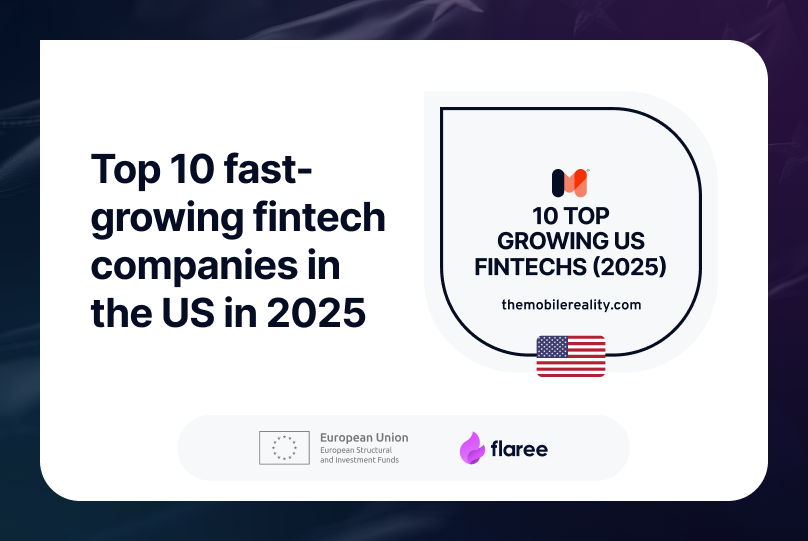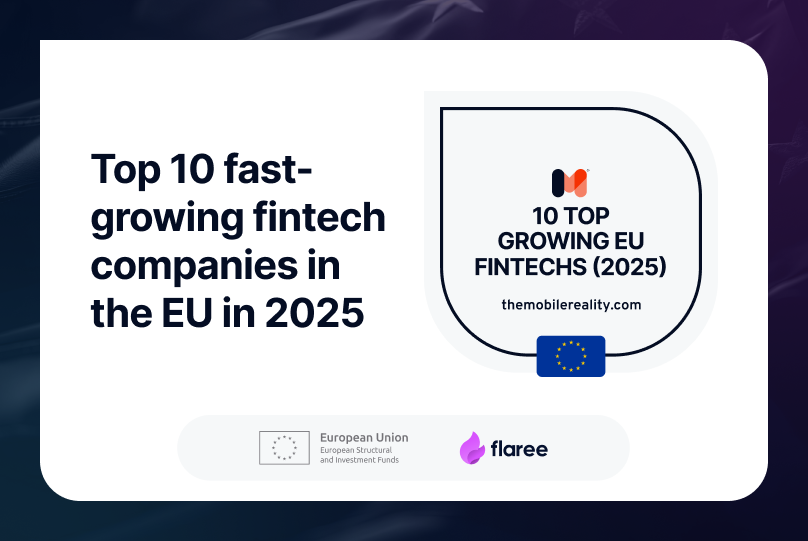Are you a startup founder or a product manager looking to bring your innovative ideas to life? Do you want to navigate the complexities of product development and make informed decisions? Understanding the differences between Proof of Concept (PoC) and Minimum Viable Product (MVP) is crucial. In this article, we will unravel the secrets behind PoC and MVP, two distinct product development strategies. By the end, you'll be equipped with the knowledge to choose the right approach for your next big idea. So, let's dive in!
Key Takeaways
Proof of Concept (PoC) is a preliminary experiment to validate the feasibility of an idea before investing significant resources
Minimum Viable Product (MVP) is a market-ready version of a product that aims to collect user feedback and validate the product-market fit
PoC focuses on answering the question "Can we do it?" while MVP focuses on "Should we do it?
PoC helps reduce implementation risks and provides valuable insights for future development
MVP allows businesses to enter the market quickly, gather customer feedback, and make data-driven decisions for further iterations
Definition of Proof of Concept
Before diving into the differences between PoC and MVP, let's first understand what a Proof of Concept is in the context of product development. Proof of Concept (PoC) is a preliminary experiment or demonstration designed to verify the feasibility of an idea or concept in a product development process. It serves as a practical test to determine if a proposed solution can be implemented successfully. By conducting a proof of concept, businesses can assess the technical and practical viability of their innovative ideas before investing significant resources into full-scale development.
During the PoC stage, entrepreneurs and product managers have the opportunity to test and validate core assumptions, identify potential challenges, and gather valuable feedback from stakeholders. The primary question that a PoC aims to answer is, "Can we do it?." It provides a foundation for future development decisions by uncovering potential roadblocks and exploring potential solutions.
Definition of Minimum Viable Product
While PoC focuses on the feasibility of an idea, Minimum Viable Product (MVP) takes a step further by creating a market-ready version of a product. A Minimum Viable Product (MVP) is a version of a product that has the minimum set of features required to satisfy early adopters and gain valuable feedback for future iterations. Unlike a PoC, an MVP is functional and ready for release to real users or customers.
The purpose of an MVP is to validate a product concept by collecting user feedback, measuring customer interest, and iterating based on real-world usage data. It helps entrepreneurs and product managers answer the question, "Should we do it?." By releasing an MVP, businesses can create value for users while minimizing development costs, as they focus on delivering only essential features. The iterative nature of MVP development allows businesses to respond to feedback and adapt to changing market dynamics.
Are you looking for custom software development agency for your business?

Purpose of Proof of Concept
Now that we understand the definitions of PoC and MVP, let's dive deeper into their specific purposes in product development, starting with the PoC. The primary purpose of a proof of concept is to test the technical feasibility and viability of a new product idea or technological innovation. It aims to answer questions like, "Can the idea be implemented?" and "Are there any significant technical challenges?". By conducting a PoC, businesses can reduce the risk of investing in ideas that may not meet their desired outcomes, face substantial implementation challenges, or cannot be rolled out on a large scale at all.
At Mobile Reality, we have created plenty of PoCs for our clients within their custom software development projects. We have developed PoCs within projects that have long development track records as a way to validate concepts for additional features. Many times, PoCs have been developed for startup clients who were checking if particular business ideas are feasible from a business and profitability perspective.
Furthermore, a proof of concept allows stakeholders to gain valuable insights into the scalability, performance, and usability of the proposed solution. It provides an opportunity to identify and address potential technical challenges, ensuring a smoother and more efficient development process. Additionally, by testing core assumptions at an early stage, businesses can make data-driven decisions and allocate resources effectively, increasing the chances of success.
Purpose of Minimum Viable Product

Now that we've explored the purpose of a PoC, let's shift our focus to the purpose of an MVP. The main purpose of developing a minimum viable product is to validate the market demand and gather feedback from early adopters. An MVP allows businesses to quickly enter the market with a product that is functional and meets the minimum requirements of early adopters.
At Mobile Reality, the MVP phase is a natural starting point for many of our startup clients. As a result of each Product Development Workshop that we run with our clients, we outline the MVP version of the desired web or mobile business. The highest priority in such a version is placed on the core business process that must be validated in the market. The MVP needs to show if there is demand for the services or products on a small scale.
The MVP app development process, from idea to market release, should not take more than a few months, assuming a reasonable team size: 1 UX/UI designer, 2 frontend/mobile developers, 2 backend developers, 1 QA specialist, and 1 project/delivery manager.
By releasing an MVP, businesses can test the waters and gauge customer interest, minimizing the risk of investing in a product that may not find traction in the market. It provides an opportunity to validate assumptions, assess the product-market fit, and address any usability issues or gaps in the user experience. The ultimate objective of an MVP is to gather insights and feedback to refine and enhance the product, ensuring it meets customers' needs and expectations.
Key features of PoC

Now that we understand the purposes of PoC and MVP let's explore their respective benefits, starting with the benefits of a proof of concept. Conducting a proof of concept offers several advantages and benefits for businesses embarking on product development methodology:
Risk Reduction: PoC helps businesses reduce the risk of investing in ideas or technologies that may not yield desired outcomes in the long run. By testing an idea's feasibility, businesses can identify potential challenges and make informed decisions about whether to proceed with further development.
Technical Assessment: It provides an opportunity to identify and address potential technical challenges early on. Businesses can develop more robust and efficient products by uncovering potential roadblocks and exploring possible solutions.
Early Stakeholder Feedback: PoC allows for early stakeholder engagement, including customers, investors, and other key players. This facilitates the identification of improvements and iterations before substantial investments are made. Gathering feedback at an early stage ensures that the final product aligns with the expectations and needs of the target audience.
Data-driven Decision Making: Businesses can make data-driven decisions by validating core assumptions through a proof of concept. This enables them to allocate resources effectively and maximize the chances of success.
Key characteristics of MVP
While PoC focuses on technical feasibility, MVP focuses on market validation. Let's explore the core features of adopting the minimum viable product strategy. Developing a minimum viable product offers several benefits for businesses and product managers. Here are some key advantages of adopting the MVP strategy:
Faster Market Entry: MVP enables businesses to enter the market quickly with a functional product. By developing only the essential features, businesses can expedite their time-to-market and become early movers in their industry.
User Feedback and Validation: By releasing an MVP, businesses can gather direct user feedback and validate their assumptions. This feedback is invaluable in understanding user preferences, identifying gaps, and making informed decisions for future iterations.
Risk Mitigation: Releasing an MVP allows businesses to test the waters and validate the market demand before investing significant resources. If the MVP receives positive feedback and gains traction, it provides validation for further investment. On the other hand, if the MVP fails to gain traction, businesses can pivot or explore other opportunities without incurring substantial losses.
Iterative Development: The iterative nature of MVP development allows businesses to respond to user feedback, adapt to changing market dynamics, and make continuous improvements. This results in a product that evolves based on real-world usage data, ensuring it meets customer needs and expectations.
Examples of Proof of Concept
To understand the practical applications of PoC, let's examine real-world examples of successful proof of concept initiatives developed by Mobile Reality.
NFT Music Marketplace
One of our PoC projects was for an NFT Music Marketplace. We built simple contracts on the FLOW blockchain to validate the sell-buy-sell process, gas fees, and the overall feasibility of the chosen business model. This PoC allowed us to assess the effectiveness of the marketplace concept and its potential in the music industry, providing crucial insights into its technical and practical viability.
Architectural Drawing Software
Another PoC initiative involved creating architectural drawing software. During the PoC phase, we validated whether developing software that automatically generates particular drawings based on architectural rules was feasible. We demonstrated to our clients that such software was achievable by building a few backend and frontend components. Since no open-source projects or SaaS services offered the required features, our development team built the entire concept and all necessary functions from scratch. This PoC provided valuable insights and proved the technical feasibility of the project.
Examples of Minimum Viable Product
To further solidify our understanding of MVP, let's explore some examples from Mobile Reality and our clients that highlight the importance and impact of the MVP stage.
At Mobile Reality, most of our projects from our case studies have gone through the MVP stage or are still in this phase. This is a typical path for each startup company. Every business understands MVP differently, and the complexity of each MVP varies. Sometimes, the MVP scope that clients request is broader than we recommend, while other times, it aligns with our recommendations. In all cases, the MVP phase validates whether the business model is right or wrong.
Currently, our own SaaS business, the NFT Reality Kudos app, is in MVP mode. We are testing whether the app and its features are interesting to users, whether our pricing is competitive, and whether our Unique Selling Propositions (USPs) are valid and can differentiate us in the market. We are on the verge of launching larger marketing campaigns to gather the feedback we need to make informed decisions about the product's future.

Let's engage and recognize employeesFlaree!
Employee recognition app. SaaS tool for HR departments to boost motivation and recognition in remote and hybrid teams!
By working through the MVP phase, we ensure that our client's projects and our initiatives can successfully validate their business models and make necessary adjustments based on real-world feedback. This approach minimizes risk and maximizes the potential for long-term success.
Apart from our experience, it is worth mentioning case studies and examples of minimum viable products that have made a significant impact in the market:
Airbnb: Airbnb started as a minimum viable product when the founders initially rented out air mattresses in their apartments to provide lodging for conference attendees. This simple experiment validated the demand for peer-to-peer accommodations and laid the foundation for Airbnb's platform, revolutionizing the hospitality industry.
Dropbox: Dropbox initially released a simple file syncing and sharing service as an MVP. By focusing on solving a specific problem users face, Dropbox gained traction, gathered feedback, and evolved into a full-fledged cloud storage solution used by millions worldwide.
Snapchat: Snapchat's MVP was a photo messaging app that allowed users to send self-deleting photos. By targeting a specific demographic and leveraging the novelty of disappearing messages, Snapchat gained popularity and expanded its features, becoming a social media giant.
Direct Comparison of PoC and MVP
To better understand the differences between Proof of Concept (PoC) and Minimum Viable Product (MVP), let's compare these two development strategies in a table:
Criteria | Proof of Concept (PoC) | Minimum Viable Product (MVP) |
Objective | Validate the feasibility of an idea | Validate market demand and product-market fit |
Focus | "Can we do it?" | "Should we do it?" |
Stage | Early in the development process | After PoC, towards market readiness |
Development Time | Short-term, quick experiments | Several months, assuming a reasonable team size |
Scope | Limited, specific technical aspects | Functional product with essential features |
Key Activities | Testing technical feasibility, identifying challenges | Gathering user feedback, measuring customer interest |
Stakeholder Engagement | Early feedback from stakeholders | Direct user feedback from real customers |
Risk Reduction | Addresses technical risks | Addresses market risks |
Outcome | Decision on whether to proceed with development | Validation of business model and user acceptance |
Examples from Mobile Reality | NFT Music Marketplace, Architectural Drawing Software | NFT Reality Kudos app |
This table clearly compares the primary differences between PoC and MVP, helping businesses decide which approach is best suited for their specific needs at different stages of product development.
Conclusion
In summary, understanding the differences between Proof of Concept (PoC) and Minimum Viable Product (MVP) is crucial for startups, entrepreneurs, and product managers seeking to navigate the complexities of product development. While PoC focuses on technical feasibility and validation of core ideas, MVP focuses on market validation and gathering user feedback. Both approaches have unique benefits and play a crucial role in product development. So, the next time you embark on a new product development adventure, which approach will you choose: PoC or MVP?
What are your thoughts on PoC and MVP? Have you ever used these strategies in your product development journey? Let's discuss this in the comments below!
Frequently Asked Questions
Is proof of concept the same as MVP?
No, they are not the same. A proof of concept (POC) is a preliminary study to demonstrate the feasibility of an idea. At the same time, a Minimum Viable Product (MVP) is an early version of a product with just enough features to satisfy early customers and gather feedback.
What is the difference between MVP and POC pilot?
A POC pilot is a small-scale implementation of a proof of concept to test its functionality in a real environment. On the other hand, an MVP is a functional product released to a limited audience to gather feedback and refine the final version.
What about PoC vs prototype?
No, a PoC and a prototype serve different purposes. A Proof of Concept (PoC) is a preliminary test to validate the feasibility of an idea or concept. It aims to determine whether a proposed solution can be implemented successfully. In contrast, a prototype is a working product model demonstrating its design and functionality. While a PoC focuses on answering "Can we do it?" a prototype addresses "How will it look and work?" Both are essential stages in product development but cater to different aspects of the validation and design process.
What is the difference between proof of concept and proof of product?
A proof of concept is focused on demonstrating the feasibility of an idea or concept. In contrast, a proof of product is aimed at showcasing the final product's functionality and performance in a real-world setting.
What is the difference between a prototype and an MVP?
The difference between a prototype and a Minimum Viable Product (MVP) lies in their purposes and stages in the product development lifecycle. A prototype is an early model or sample of a product used to visualize and test its design and functionality. It focuses on demonstrating the product's look and feel and is often used for internal reviews and stakeholder feedback.
In contrast, an MVP is a functional version of the product with just enough features to satisfy early adopters and gather valuable feedback. The primary goal of an MVP is to validate the product-market fit and assess market demand. Unlike a prototype, an MVP is released to real users and is used to collect data and insights that inform further product development and iterations.
SaaS Business Insights
The SaaS industry is ever-evolving, with new trends, technologies, and challenges emerging continuously. At Mobile Reality, we delve deep into the intricacies of SaaS business strategies, offering insights and expert guidance. We invite you to explore our comprehensive articles that cover a wide range of SaaS-related topics:
- Overcoming the Significant SaaS Challenges
- Elevate Your SaaS Strategy with Top SEO Tools
- SaaS Architecture Guideline: Multi Tenant vs Multi Instance
- Mastering Software Development Estimation Techniques
- Mastering Automated Lead Generation for Business Success
- Maximizing Revenue: App Monetization Strategies
- Elevate Your Tech Strategy with a Fractional / Time CTO
These resources are curated to expand your knowledge and support your decision-making in the SaaS sector. Mobile Reality is recognized as a leader in SaaS development, providing cutting-edge solutions for various businesses. If you're considering expanding your SaaS capabilities or need expert guidance, contact our sales team for potential collaborations. Those interested in joining our dynamic team are encouraged to visit our careers page to explore exciting opportunities. Join us as we navigate the dynamic world of SaaS business!



